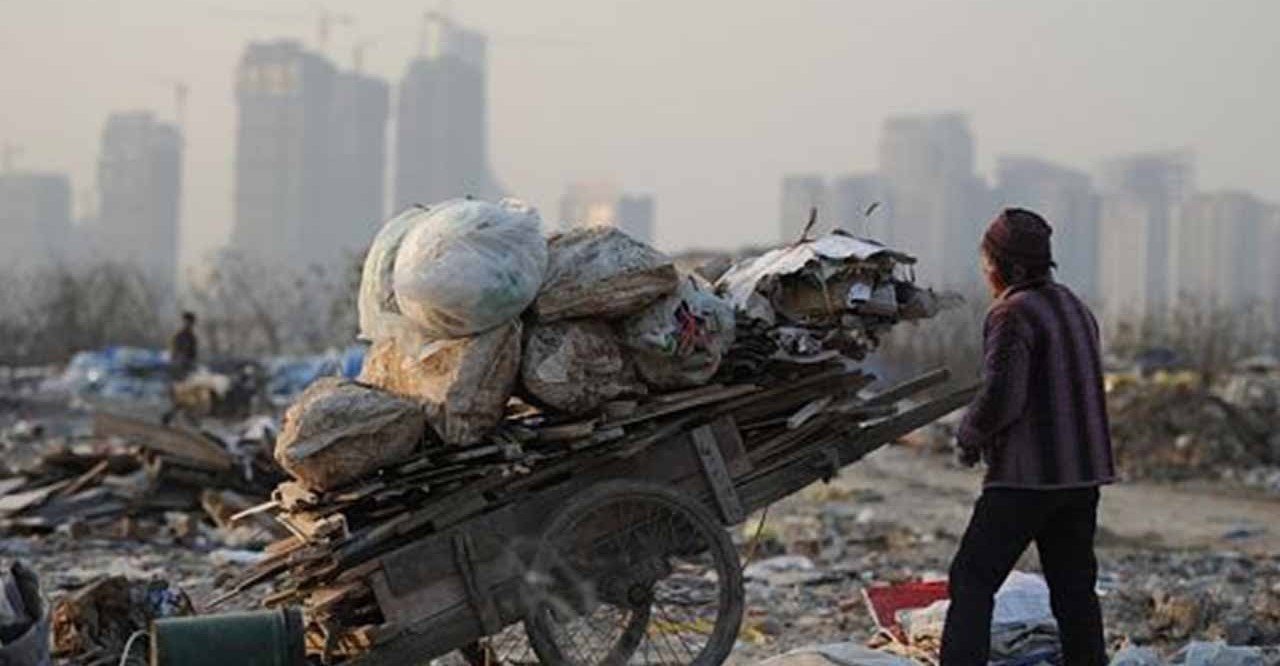

Jul
It goes without saying that China’s impressive post-1978 economic growth came with a more than significant poverty reduction. As inflation-adjusted income went up, the percentage of individuals living under the $1.9 per day poverty threshold plummeted, from almost 90% in the early 80s to low single digits today.
However, a distinction needs to made between poverty and inequality. To illustrate this, we will over-simplify and assume that 50% of a country’s population earned exactly $1 per day 10 years ago (being below the poverty threshold), whereas the other half earned $2 per day (slightly above the poverty threshold). Today, we will assume the citizens who earned $1 per day make twice as much and are now above the poverty line, whereas those who used to earn $2 per day experienced a (much) more impressive wage increase and make $10 per day at this point.
In this example, poverty was actually eliminated (since nobody earns less than $1.9 per day) but income inequality went up, because 50% of the nation’s citizens saw their income double, whereas it went up five-fold for the other 50%. Therein lies the distinction we need to understand between poverty reduction and income inequality increases, because yes, the two can most definitely occur at the same time.
The numbers paint precisely this picture of China’s reality: while a lot of people managed to escape poverty since the 80s, income inequality went up dramatically up until 2008 and experienced a modest decline since. Or, to put it differently, a very high number of people benefited from China’s GDP growth but some groups experienced asymmetrically higher benefits.
Income inequality is measured through metrics such as the Gini Coefficient, which ranges from 0 to 1, with 0 representing perfect equality and 1 extreme inequality. In the early 80s, China’s Gini Coefficient was in the 0.3 zone, whereas nowadays, it’s dangerously close to the 0.5 threshold. For added context, the Gini Coefficient of today’s China is worse than that of Togo or Malawi and slightly better than the coefficient of Honduras and Nicaragua.
As such, as Forbes data for 2018 indicates, the one hundred richest Chinese citizens account for approximately $643 billion in wealth combined, more than the combined wealth of China’s bottom 40%, which lies in the $637 billion region. To put it differently, 100 people currently have more wealth than approximately 425 million adults combined, a lot of whom earned their fortunes in sectors that enabled monopoly dynamics to work in their favor such as real estate (20 of 100) or the industrial sector (29 of 100).
Of course, inequality is a pressing issue in the West as well, as movements such as “Occupy Wall Street” made clear… it’s just that, as the numbers make clear, the situation is much worse in China at this point in time. Why is income and wealth (in)equality important? Simply because imbalances tend to lead to social tensions, something the Chinese authorities want to avoid at all costs due to China’s one-party system. As such, making sure the gap between the rich and poor gets narrowed in a much more aggressive manner than what happened as of 2008 represents one of the top priorities of the Xi Jinping administration, in line with his goal of turning China into a “modern affluent society” by the year 2021, which marks the 100th anniversary of the Communist Party of China. Of course, this doesn’t mean continuously eliminating poverty has been neglected as a goal, with the CPC pledging to wipe it out completely by 2020 (a goal set back in 2015, when there were 70 million citizens living under the poverty line, according to official calculations).
The main reasons behind the significant inequality are… well, complex. In the spotlight, one might argue that we have the mega-trend of rural migration to urban areas. In other words, an extremely high percentage of China’s working-age rural population is migrating to cities in search for a better life, which inevitably leaves behind vast rural areas that dramatically lag behind. Also, economic growth rates have indeed been impressive but the nature of China’s economic growth has oftentimes been chaotic, with capital allocated in manners that cannot be conducive to inclusive economic growth due to reasons ranging from lack of vision to corruption.
To sum it all up, China can best be described as a country where poverty will most likely end up being wiped out sooner rather than later but that is no longer enough. In light of China’s ideological background and political system, the current inequality levels are anything but sustainable, with the Xi Jinping administration seemingly understanding this reality and shaping policy accordingly.
